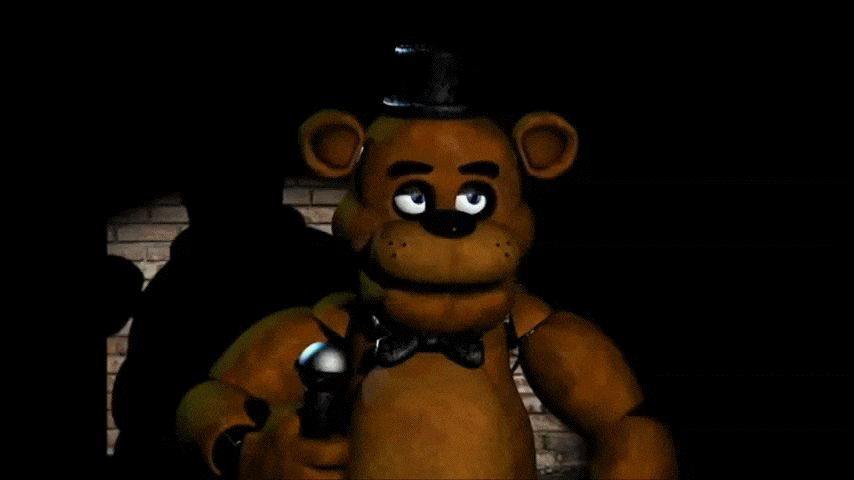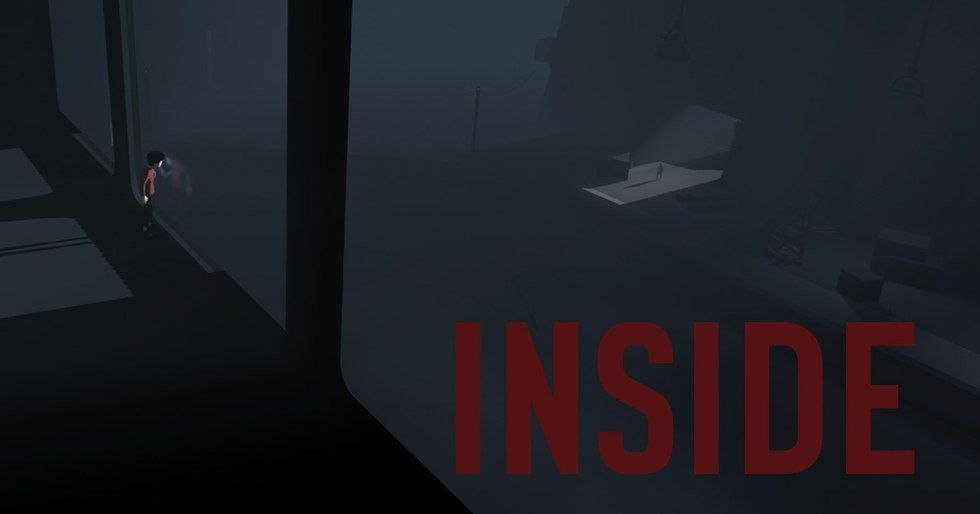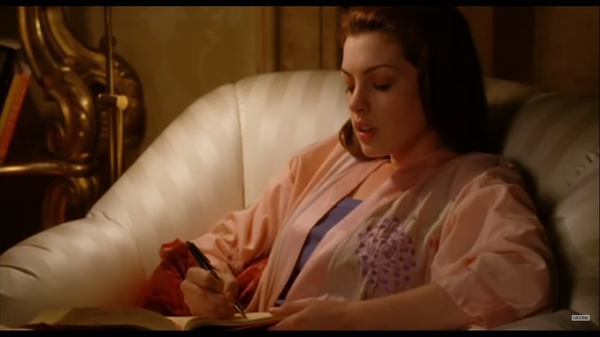Spoiler warning: I will discuss the ending and secret ending of PlayDead’s Inside. If you have not already, I highly encourage you to play the game before reading.
Back in 2010, independent game developer PlayDead released Limbo, a game which earned a great deal of respect for its charm and mystery. This success was apparently not enough for PlayDead, as earlier this year they released Inside, another puzzle platformer game which, in my opinion, surpasses its spiritual predecessor. Like Limbo, Inside is a side-scrolling platformer with a limited color pallet, a lovely (yet unnerving) atmospheric soundscape, and a faceless child as its protagonist. While the new art style, graphics, puzzles (and puzzle mechanics) are all refreshing and fun, I believe that Inside’s greatest strength is the sheer amount of story and personality it communicates – without a single written line of actual dialog. The only written word that ever appears on the screen whilst playing the game is the title: “Inside”. This word hints at a number of prevalent themes within the game. The beauty of this title is the sheer simplicity – the player is given so much room to wonder what exactly it means.
Take the very beginning of the game: there is no menu screen, merely the title on display as the child protagonist tumbles down a cliff into sight to begin his adventure. In this moment, he is “inside” – the player soon sees that the area has multiples layers of protection from outsiders, including traps, guards, and all sorts of other obstacles. This very literal interpretation is furthered as the game progresses – the child goes “inside” buildings, sewers, a submarine, etc. It seems the title could merely be referencing the child’s presence within a seemingly evil place – which would also seem to set a goal for the game: stop being “inside”; escape from that place (as previously stated, there is not text within the game to tell the player what their objective is. Without dissecting motivation, the basic goal the player tries to accomplish is simply: “go to the right”). While this assumption likely isn’t wrong, per say, it is certainly not lending itself to the full creative potential of this game.
Another idea behind the title’s meaning is introduced with one of the games key mechanics: mind control. Within this warped, potentially post-apocalyptic world, mind-control seems to be somewhat of a common occurrence, as is indicated by the number of mind-control helmets littered around, as well as the presence of a zombie-like people which wait, slumped on the ground, to be controlled. To aid in his escape from various threats, the child protagonist must utilize these mind-control helmets and zombies. This mechanic is used in a great variety of ways throughout the game, from using the zombies to activate pressure plates, to having them do the child’s heavy lifting, to hurling themselves down an elevator shaft to give the child a lighter landing. The very casual, matter-of-fact implementation of this fairly disturbing mechanic brings new meaning to “inside”. Could this be a reference to being “inside” another’s head? One scene in particular adds credence to this theory – during a section of a puzzle, the child has need of multiple zombies to help him, but is only able to control one for that moment. To solve this puzzle, the child must force that zombie to put on a mind-control helmet of its own – thereby extending the reach of the mind control to another zombie nearby. The completion of this puzzle is accompanied by a distinct change in the background music. This makes this scene feel far more significant, especially given that this is the only time the player witnesses this double mind-control – but I will return to that later. For the time being, it is safe to say that the game wants to draw attention to the question: “How far inside can one go?”
Well, as it turns out, pretty far. The final two levels of the game show something else that is “inside”. Deep within a sketchy research lab in the depths of this dystopia, the child finds a creature in a vat of water. This creature appears as an enormous, pulsating sack of flesh with various limbs and torsos extended out from it – essentially an amalgamation of at least a few dozen people. Finding this creature seems to have been the child’s goal from the beginning, and he sets about freeing it from the observation tank it was kept in – only to be subsumed into the creature. The game does not end here, however – from this point onward, the player controls the creature. Again, more possibilities emerge – the creature has been kept “inside”, and the boy is swallowed by the creature and then lives “inside” of it. This would seem to be the intended meaning, given that the game’s first ending is reached when the creature escapes the facility – when it is no longer “inside”. But, again, I would like to propose that it goes deeper than this.
The player becomes accustomed to being in control in this game – whenever the child is in possession of a mind-control helmet (and even occasionally when he is not) he dictates the behavior of the zombies in that area. This seems an obvious fact, but bear with me. All the various occasions of the child being in command of his situation could make the player misinterpret the final two stages of the game – after the child is absorbed by the creature, they may assume that it is the child, from within the creature, giving it commands that it obeys. However, there is a very distinct possibility that it’s the exact opposite scenario, and the entire game is the creature controlling the child to its own devices – namely, its escape. The main supporting evidence for this idea comes from the secret ending, which is achieved after the child locates and unplugs various hidden devices which closely resemble the mind-control tech. After doing this, if the child goes to a specific location in the game and inputs a code, they will have access to the apparent hub of the mind control. If they unplug this, the child will stumble back and fall into a slump which mirrors the position of the mind-controlled zombies when nobody is in command of them. The implications of this are plain – the child is one of the zombies, and has been controlled long-distance by someone (or something) out of sight. Given the primary ending of the game, the creature is the most logical and likely candidate for the controller. But this reveal isn’t merely dropped on the player in the very ends of the game – if they pay attention, they could spot occasional clues.
The child has a great number of potential deaths throughout the game – with their own distinct animations. However, in all of these animations, never is the child shown to bleed – in fact, the only time blood is present within the game is after the death of one of the researcher’s in the facility at the end. The child is shown broken, crumpled on the ground, but never humanly dead – he takes damage in a way similar to the zombies he controls. While that may foreshadow his being a puppet, the creature’s existence itself is foreshadowed by a carefully crafted motif throughout the game. In the farm level, the child encounters a number of baby chicks, which do as baby chicks do, and follow him. Similarly later on, the child is followed by a school of fish underwater. And then there’s the way that the zombies follow him when they are under his control. Given the mechanics of the game, these things all make sense. However, a particular detail gives special emphasis to this repetition: if the child stops moving while around the birds, the fish or the zombies, they form a circle around him and stick closely to him. For the animals, this is somewhat understandable – it’s realistic. But the animations of the zombie figures sticking close to the child – it is unnerving, to say the least. They don’t merely stop, having been deprived of orders to follow – the rush forward to press as close as possible to him. The mass of bodies shivers and convulses with their individual movements, and their twitches send arms and legs extending. This is too specific a detail to be coincidental, in my opinion. With these things in mind, I submit to you my ultimate thought of the game, which is hidden in plain sight: the entirety of the player experience has the creature “inside” the boy – his task was not his own from the beginning. The entire journey the player helps him execute is to accomplish the creature’s escape, and once that has been done, the boy is taken within the creature – which becomes slightly less horrifying, if he’s basically been the creature the entire time. This game does not hesitate to toy with the concept of control, and the illusion of it – which may be the reason for the single scene wherein the player learns that a zombie may “control” another zombie.
Of course, the fun of such an intricate and complex game is the multiplicity of meanings – which is to say, all of these potential meanings for what “inside” means could exist – “inside” one another. And isn’t that the purpose of thoughtful media like this? Any old person can create something with a definitive meaning. There is rarely a thought of the deeper themes and morals hidden within Call of Duty games – they are what they appear to be, and that’s the extent of it. What is truly beautiful about Inside and games like it, is the fact that there doesn’t even need to be a definitive answer. So much of the wonder in the game is the mystery, the vagueness that allows your imagination to fill in the blanks. This wonder is something that PlayDead excels at – making a charming experience that can connect to all players in some way. After seeing what they’ve come up with so far, I look forward to seeing what else they’ve got “inside” their think tanks.




















